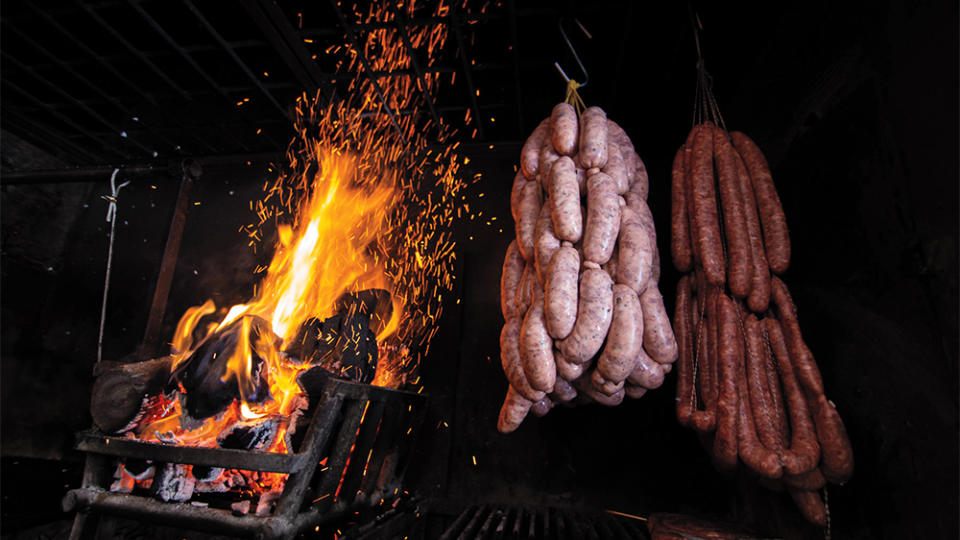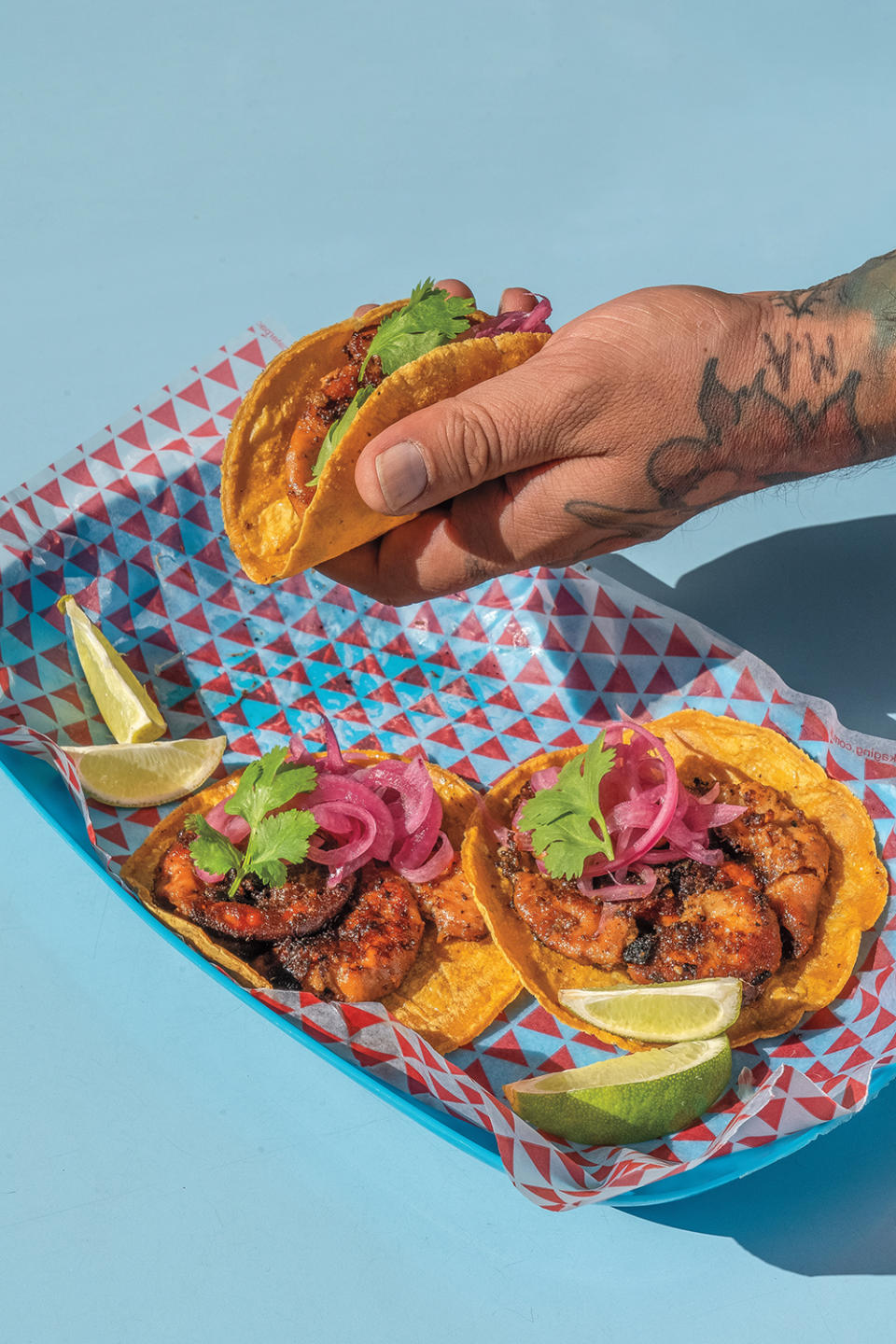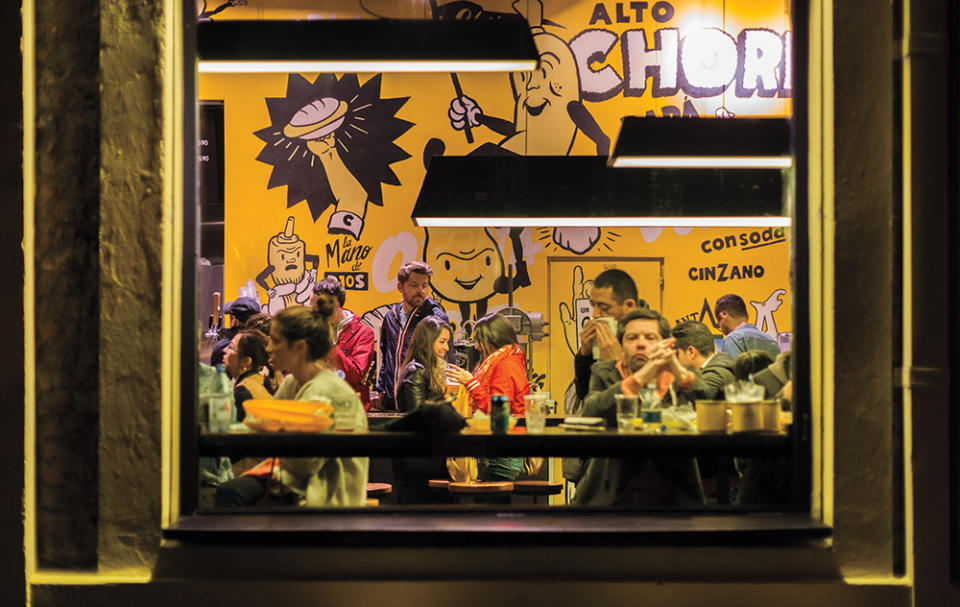How This Argentine Chef Built a Following on the Beef His Family Raises

“I want everyone to know what high-quality beef is, to [taste] the difference, the way connoisseurs distinguish among wines,” says 34-year-old Argentine chef and restaurateur Germán Sitz. Which, even in Argentina, is no small ambition. But in a country renowned for its meat, the beef served in the five restaurants that Sitz owns with his business partner, chef Pedro Peña, doesn’t just stand out—it conjures a fascinating footnote of Argentine history.
In 1889, fleeing anti-Semitic violence in czarist Russia, over 800 Jews settled in La Pampa, a rural region in central Argentina, then populated by the local cowboys known as gauchos. It was an unlikely merging of disparate communities: Jewish refugees and lasso-swinging cowhands in wool ponchos and leather boots. Sitz is a descendant of those refugees—who assimilated and became known as Jewish gauchos—and the beef he offers in his restaurants comes from the cattle on his family’s land in La Pampa, where they’ve been ranching for over 130 years. It was Sitz’s grandmother, from the second generation of those Jewish gauchos, who in 2014 lent him the money to open his first restaurant, the acclaimed live-fire steak house La Carnicería.
More from Robb Report
The 33 Best Gifts for Steak Lovers, From Grills to Knives to Premium Beef
How This Winemaker Creates Outstanding Bottles in One of the World's Most Unforgiving Regions
Inside Qué Bárbaro, an Ode to Live-Fire South American Cooking From One of L.A.'s Best Chefs

In Argentina, beef is everything. Well, soccer is everything, but asado (the word describes both the open-fire grilling method and the get-together at which it’s served) has been woven into the national fabric since the arrival of the conquistadores. On Sundays, people gather with family and friends to open bottles of Malbec and follow a series of well-worn culinary traditions, from how the cuts are laid on the grill to the order in which they’re cooked. The average Argentinean consumes about 120 pounds of beef per year (twice the American average), and the staple’s deeply entrenched cultural and economic importance is largely thanks to the gauchos, who spent centuries perfecting their livestock techniques.
At the cooperative that Sitz’s family and a few others have shared since those ships landed from Russia—“It was through cooperatives that these immigrant families were able to get ahead,” Sitz notes—both the animals and the fields are certified organic, and Sitz employs no middlemen, personally overseeing the slaughter, transport, butchering, and preparation. What he serves his customers is entirely traceable and ranch-to-plate in the truest sense.

Sitz isn’t just a gaucho because of his lineage, or because his knowledge of cattle was passed down through generations of cowboys. He also embodies the make-something-from-nothing ethos that allowed those refugees to succeed: Despite a rural childhood on the farm, Sitz was on his way to becoming one of the most celebrated chefs in Buenos Aires by his mid-20s. A decade later, he and Peña are working on a sixth restaurant in the capital city and are expanding into the U.S., with plans to open another Niño Gordo, their Asian-fusion grill, in Miami in 2024.
Though famous in Buenos Aires, the duo’s restaurants still qualify as “finds” for many travelers, though in-the-know foodies have started to take note: Chori, the city’s three-outpost choripán shop, was featured on the food show Somebody Feed Phil for its take on the popular Argentine street food of chorizo on a toasted bun, similar to a hot dog. The sweetbread at La Carnicería has been hailed by Danny Meyer as “the most delicious [he’s] ever eaten,” while the Latin American 50 Best Restaurants list recently awarded Niño Gordo the 75 spot (the list went to 100). Most recently, The New York Times recommended a walking tour of Sitz’s and Peña’s restaurants.

Want to try for yourself? Start at Chori with a choripán de cancha, an elevated version of the sausage sandwiches Argentineans like to eat at soccer games, along with a glass of vermouth. (Argentina has the third-largest Italian population in the world, so vermouth is all the rage and interesting options abound.) Stop by tapas bar Paquito for the fluffy croquetas, then La Carnicería for blood sausage with apple compote. And don’t forget Niño Gordo for the beef tataki. You might not be a true beef connoisseur by the time you’re done, but you’ll certainly be sated—and very happy.
Best of Robb Report
Why a Heritage Turkey Is the Best Thanksgiving Bird—and How to Get One
The 10 Best Wines to Pair With Steak, From Cabernet to Malbec
Sign up for Robb Report's Newsletter. For the latest news, follow us on Facebook, Twitter, and Instagram.

